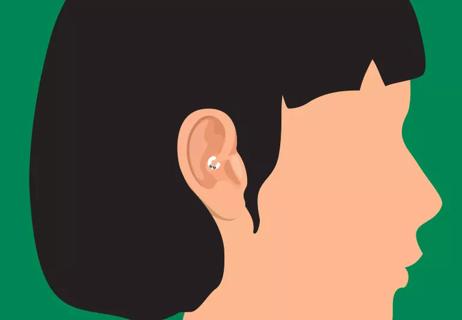Learn the pros and cons of CGRP inhibitors

If you have frequent migraine headaches — occurring a few days a month or more — you know the toll they can take on your work and quality of life.
Advertisement
Cleveland Clinic is a non-profit academic medical center. Advertising on our site helps support our mission. We do not endorse non-Cleveland Clinic products or services. Policy
So how much of a difference might a new class of migraine-prevention drugs called CGRP inhibitors make for you?
“This is the first class of drugs that has specifically been developed for migraine prevention,” says Payal Soni, MD, a neurologist specializing in headaches.
“These medicines are good options for patients who have tried and failed with at least two classes of oral preventive medicines, or who aren’t able to take some of the other medications we have for migraine prevention.”
Until now, drugs used to prevent migraines were actually developed to lower blood pressure, prevent seizures or treat depression. But they were later discovered to also help with migraines, so the drugs were prescribed in what’s called an “off-label” use.
CGRP inhibitors are a new class of medicines that address migraines head-on. Four drugs in this class have been approved by the U.S. Food and Drug Administration: erenumab (Aimogiv®), fremanezumab (Ajovy®), galcanezumab (Emgality®) and eptinezumab (Vyepti®).
CGRP stands for the scientific name of a protein that’s naturally found in the nervous system. The protein is released from nerve endings, including those surrounding the brain, where it widens blood vessels and may promote inflammation and pain. CGRP inhibitors work by blocking the protein and preventing or reducing pain in the process.
Over several clinical studies, these drugs were associated with an average reduction of three to five headache days per month in people with frequent migraines.
Advertisement
Although that might seem pretty modest, it’s about the same benefit gained with the drugs traditionally used to prevent migraines. And the word average is key: Some people had much better results.
“Based on the clinical trials, these new drugs aren’t necessarily more effective than the drugs that we’ve had, but there are some positives,” Dr. Soni says.
First, they have what’s called a longer half-life, which means patients only need to take them once a month or once every three months instead of daily.
Another positive is they generally cause fewer and milder side effects than other drugs — mainly irritation at the injection site or constipation.
“One of the main reasons why patients stop using some of our traditional migraine preventives is because of side effects. In general, these CGRP drugs have a better side effect profile,” Dr. Soni adds.
They also don’t typically interact with other drugs in a way that is dangerous for the people taking them. “They can be used in patients who have stroke, coronary artery disease, liver disease and liver disease,” she says.
Erenumab, fremanezumab and galcanezumab are taken once a month by injection. A simple EpiPen®-like injector device makes it easy for people to self-administer the drug.
Eptinezumab, which was just FDA approved in February, is given through an IV every three months. This might be a preferable option for people who get bad swelling or bruising at the injection site with other CGRP inhibitors.
Dr. Soni adds that a few other issues are crucial to determining with your doctor whether these medicines might make sense for you:
Advertisement
Learn more about our editorial process.
Advertisement

Among the options is a fast-acting medication that offers relief in as little as 15 minutes

Start by reevaluating your triggers and lifestyle factors, but also consider trying new medication

A little can help, too much can hurt

They might look cool, but there’s no scientific evidence that daith piercings ward off pain

Getting enough sleep, avoiding dietary triggers and reducing stress can provide relief

Your genes may offer some insight when learning about your migraine symptoms

Migraine length depends on your triggers, health history and whether they are chronic

If you’re experiencing the worst headache of your life, it may be time for a trip to the hospital

If you’re feeling short of breath, sleep can be tough — propping yourself up or sleeping on your side may help

If you fear the unknown or find yourself needing reassurance often, you may identify with this attachment style

If you’re looking to boost your gut health, it’s better to get fiber from whole foods